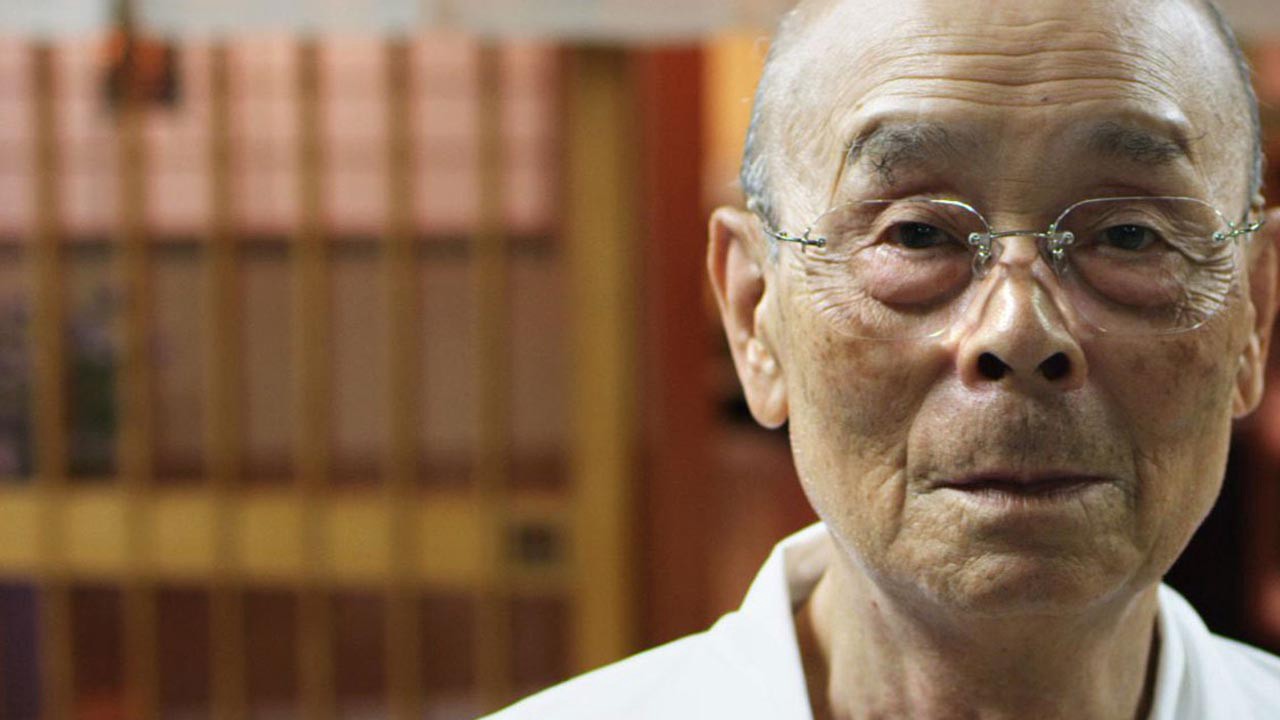Menu
Trading Justice Newsletter
Trading Justice Newsletter
If you are thinking about the “don’t put all your eggs in one basket” type of teaching, yes, absolutely.
Have you ever wondered how many lessons are hidden in a Bruce Lee interview? Or in a soccer game? Perhaps Sinatra? Michael Jordan? Expect tons of lessons.
The financial markets are a metonymy of life and social interactions, not a clinical and sterile environment as we are led to believe.
The financial markets are a metonymy of life and social interactions, not a clinical and sterile environment as we are led to believe. The human nature is perfectly represented there: in hopes to improve our wellbeing and to get closer to a higher purpose, we engage in voluntary exchanges. There is hope in the mixture, and also high doses of fear and greed. Being successful both in life and in trading requires more or less the same mental processes, I suppose.
Have you ever broke an arm or a leg? You don’t notice people who did in the streets but as soon as you break a limb, there is this instant profusion of people with broken limbs everywhere you go. The same goes for investing. Now that we are traders and investors, it seems that investing is everywhere. Even in my mother’s words telling me to carry an umbrella when the sun is baking brains at 110ºF outside. I see investment teachings everywhere like Cole Sear sees dead people in The Sixth Sense. Maybe I am becoming a little bit funny in the head. It is what it is.
This is what we’ll be showing you with this first collection specially curated for this month’s newsletter. From my mother to the Joker, here’s what I’ve learned about investing from NON-investors.
This is such a Mother’s Classic. Time will never wear it out. Good mothers are always full of wisdom to share. Put together a mother and a grandmother (not her in-law, though) in the same living room for a cup of tea and you can double the amount of wisdom that comes out in a single day.
Let’s break down all the variables and equations so we can build up the investing argument:
Variable #1: Umbrella
Equation #1: Umbrella = Protection
That was simple. They don’t want us to get soaked wet for obvious reasons.
As time went by and age began to settle upon my young shoulders, the advice began changing a little bit, except for the umbrella part:
“Son, take this extra money with you. And don’t forget the umbrella. You never know when you’re going to need’em.”
Variable #1: Umbrella
Variable #2: Extra cash
Equation #2: Umbrella + Extra cash = Protection
Better safe than sorry, I guess. In the stock market, extra cash also means ammo, in case an opportunity shows up.
Fast forward a little bit, maybe a decade, and things were getting exponentially hairy. The umbrella was always there, though:
“Son, always take some condoms with you. And don’t forget to take this extra money and also the umbrella. You never know when you’re going to need’em. Remember also to never hang around with that type of people. Stay away from drugs too.”
Variable #1: Umbrella
Variable #2: Extra cash
Variable #3: Condoms
Variable #4: Hell {That type of people + Drugs)
Equation #3: Umbrella + Extra cash + Condom – Hell = Protection
An umbrella, some extra cash, and a few condoms. Always take them with you. You never know when you’re going to need’em. Thanks, mom.
“When your mother asks, ‘Do you want a piece of advice?’ it’s a mere formality. It doesn’t matter if you answer yes or no. You’re going to get it anyway.” — Erma Bombeck
“Let me tell you something you already know. The world ain’t all sunshine and rainbows. It’s a very mean and nasty place and I don’t care how tough you are it will beat you to your knees and keep you there permanently if you let it. You, me, or nobody is gonna hit as hard as life. But it ain’t about how hard ya hit. It’s about how hard you can get hit and keep moving forward. How much you can take and keep moving forward. That’s how winning is done!”
Who doesn’t remember this iconic dialogue between Rocky Balboa and his son in the Rocky VI sequel (2006)?
If your positions move against you, how much you think you can stomach? If the market crashes, how much pain do you think you can handle?
The market will hit your hard from time to time and it’s all about how hard you can get hit and keep moving forward. You can’t lose the battle at the first punch. You’ve got to be alive to play the next round. This is position sizing in a nutshell.
So, our advice is this: if you are brand new, operate on a level that is at most one-half the level you believe you can tolerate. Take the size of the loss you *think* you can stomach divide it by two.
This quote belongs to a fresh new basketball player. The kid is bright and we can see he already has a future.
Michael Jordan is his name.
We failed thousands of times as traders and we will fail a thousand more. We failed thousands of times in our private lives, in our personal projects and we will fail a thousand more.
It’s OK to fail. Just make sure you don’t fail too big for too long, or you’ll be thrown out of the game. The risk of ruin is something you must never run into. Benefit from shock. Be antifragile. Use your errors as a source of information. Develop and know yourself better during the process of becoming a skilled trader.
Just like the NBA’s Birds and Jordans, put many hours into practicing, studying and refining your technique. You won’t win every game but you should definitely be working hard to win the championship.
Japanese restaurants. We’ve all been there at least once in our lives and we love Japanese food. But what impresses me the most is the minimalistic appearance of some of their dishes. It pleases and surprises the eyes before the stomach.
Take Nigiri Sushi, for example. Combine a slice of fish on top of some rice and you got it. How we never thought about it before? That should be easy to prepare. Right?
NO. Not by any stretch of the imagination. Looks very simple but nothing could be harder to attain. For a Sushi chef, to get to that minimal result, that would mean:
— “You’re a trader, right? So, you just buy a stock, wait for it to appreciate in value and then sell it back for a profit? You just click on this button right here, wait for the *TILLILLON* sound and that’s it?”
You get the point. Mastering complexity is completely different than getting rid of it. In order to just sit on a chair and click a button to buy or sell an asset, we have to master all the complexity behind it. Like Sushi Chefs in their own craft.
Is simplicity the ultimate sophistication? You bet. But nothing could be harder to attain.
Here’s a documentary we suggest you watch: “Jiro Dreams of Sushi”. A true exercise of humility, key component for anyone that wants to call him/herself a master.

“You have to fall in love with your work. Never complain about your job. You must dedicate your life to mastering your skill. That’s the secret of success… and is the key to being regarded honorably.”
— Chef Jiro Ono —
“Look what I did to this city with a few drums of gas and a couple of bullets, hmm? You know what I noticed? Nobody panics when things go according to plan. Even when the plan is horrifying. […] Because it’s all part of the plan.”
He’s a psycho but he nailed it: Nobody panics when things go according to plan. Not even you.
Your trading business must have a clear plan. No need for anything fancy. Develop one you are able to understand and follow, even if you look at it only every once in a while.
Start with the big picture: Why are you doing this? That’s your Mission. Then break it down into the structure, that is the WHATs and HOWs you’re going to need to accomplish the Mission.
In August this year we re-released a major hit at Tackle Trading: Start With Why. We recommend you read the blog post and watch the video below.

As for the HOWs and WHATs, begin the structure with the portfolio design. Define each major category and the ideal allocation. Inside each portfolio category, there should be at least one system, dedicated exclusively for that category. The system, then, should contain the rules for identifying candidates, qualifying trades, entering orders, managing positions, and systematically review. All executed with perfection.
Remember, you are the captain of your ship. You are the John Keating of your Dead Poets Society, the leader of your own business. Only you will find true meaning and purpose in what you are doing.
A plan for your business and a plan for each trade. This way you will never panic. Because it’s all part of the plan.
Music is life and also a vast ocean to explore. Being a musician is one of the most rewarding professions there is. It has taught me quite a lot of valuable lessons in the +20 years I’ve played in bands.
Take an acoustic guitar as an example. The strings are stretched, submitted to stress, but just the right amount of it. If you pass the ideal point, they’ll snap. If you don’t stretch them enough they won’t play. In both cases, they will be out of tune, producing noise instead of music.
You have to strum the strings and press them against the neck of the instrument to make music. In other words, you are submitting them to more stressful situations. No stress, no music. Just the right amount will do the trick. But how would you know the right amount?
By practicing, studying and refining your technique. By developing and knowing yourself during the process. Maybe you’re a Bossa Nova musician or the next heavy metal shredding master. Make mistakes. Thousands of them. Snap the strings and hurt yourself. Learn scales by also playing the wrong notes.
Put thousands of hours into practicing and refining skills into your trading business too. You must work hard towards performing your greatest gig ever.
In this image, you can see a music sheet (above) and an option chain (below).
The music sheet is Frederic Chopin’s Nocturne in E-flat major arranged and tabbed for guitar. The other is a regular option chain from the Tastyworks platform. When you start trading or playing guitar, you won’t get everything right on the first try.
Quite the contrary, it’s more likely that you will mess everything up, missing notes on the music sheet and losing money on the brokerage account. Practice is the key to perfection in both worlds. Train exhaustively before making any live gig.
Once we reach a certain level of mastery of the trading craft, we feel like we are (finally) settled down. Symbolically, the osmosis is done and knowledge doesn’t need to pass through a semipermeable membrane into our brains anymore.
We couldn’t be more wrong.
Sinatra, yes, The Old Blue Eyes himself, took lessons with John Quinlan, a vocal teacher. His voice tone and diction were perfect, we all know and admire that, but behind that perfection, he accumulated countless hours of practice. From simple words like “brother” to the letter ‘D’, Quinlan taught Sinatra how to sharpen his diction, removing any regional accent. Voice is an instrument, after all.
On “Tips On Popular Singing”, a collaboration between Sinatra and Quinlan, there is this interesting excerpt we’d like to share with you:
“[…] Quinlan began by training Sinatra’s body from feet to pelvis to neck to temples, remolding it as a reservoir for polished tone. His breath was inflated to accommodate long, smooth notes with constancy. The mouth that, in speech, wrenched itself into Joisey knots was reprogrammed into masks of widened, relaxed singing positions.”
And then you got perfection itself: Frank Sinatra.
Knowledge and practice, when plotted on a chart, assume a V-shape formation. The beginning of the shape represents our skills and knowledge today. As we move forward, the letter widens, representing the amplitude of what there is still to be learned and mastered.
We are always searching for meaning in what we do. From the little things to life itself. Meaning is a basic instinct for us. Its pursuit is one of the highest grounds we can achieve during our lifespan. “I’ve lived a life that’s full” is what we want to say when we get to the end.
According to Dr. Jordan Peterson, the act of spontaneously admiring someone is the manifestation of the instinct for meaning. That is precisely why people admire sports figures so much. They play out the drama of attaining the goal backed up by the pursuit of both physical and psychological perfection. We admire discipline and perseverance, naturally transposing this model to something applicable in our own lives.
This is why it is so important to have mentors. They are to trading and investing what sports figures are to sports. We admire their psychological and emotional control when approaching the markets; serenity and discipline, naturally transposing this model to something applicable to us. Once we get the momentum rolling and we become successful traders ourselves, we become a “sports figure”, inspiring others with our path in life and trading.
It’s what you do in the dark that puts you in the light.

There you go, eight simple lessons on trading and investing learned from everyday situations.
Stay tuned for Lessons on Investing, Collection II, where we will be featuring:
All these situations have at least one thing in common: hidden investing lessons disguised as mundane things. We do hope you also learn some valuable lessons from them.

© 2019 Trading Justice. All rights reserved.